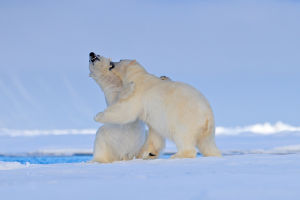The humpback whale, known scientifically as Megaptera novaeangliae, stands as a majestic behemoth traversing the vast expanses of the ocean.
Adult humpback whales can grow over ten meters long and weigh nearly 30 tons.
Despite their imposing size, humpback whales display surprising altruism, especially in interactions with killer whales (Orcinus orca).
While one might expect humpback whales to embody a serene and carefree demeanor as they navigate the ocean, numerous observations reveal a different aspect of their behavior.
Contrary to expectations, humpback whales have been witnessed to actively intervene in situations where killer whales are hunting, displaying a remarkable tendency to protect and aid other marine mammals.
Robert L. Pitman, along with a team of researchers from the Southwest Fisheries Science Center in California, embarked on a comprehensive study to unravel the complexities of interactions between humpback whales and killer whales. Their findings, published in "Marine Mammal Science," shed light on the underlying dynamics of these encounters.
In contrast to the docile nature of humpback whales, killer whales are fierce carnivores known for their cooperative hunting strategies reminiscent of wolf packs. These apex predators target a wide range of prey, including fish and marine mammals such as seals, sea lions, and even young whales.
Pitman and his colleagues meticulously analyzed 115 documented instances of conflicts between humpback whales and killer whales spanning from 1951 to 2012. These records, compiled from various sources worldwide, provided insights into the motivations and behaviors of both species during these encounters.
Surprisingly, the study revealed that in 95% of documented cases, humpback whales intervened to protect mammalian prey from the predatory advances of killer whales. Remarkably, humpback whales initiated 57% of these conflicts.
They displayed a proactive approach, often traveling significant distances to interfere with killer whale hunting activities.
One particularly striking observation involved humpback whales coming to the aid of a mother and calf gray whale under attack by a group of killer whales. Witness accounts describe how the humpback whales rallied to the scene, effectively driving away the aggressors and ensuring the survival of the imperiled gray whales.
In another instance, humpback whales intervened to protect a gray whale calf from being separated from its mother and drowned by killer whales. These acts of altruism underscore the protective instincts and cooperative nature of humpback whales, who utilize their immense size and strength to safeguard vulnerable marine mammals.
Researchers speculate that humpback whales rely on their acute hearing to detect the predatory behavior of killer whales, prompting them to intervene and protect potential prey. Killer whales, particularly those that prey on marine mammals in the North Pacific, exhibit a pattern of silence during the stalking phase, followed by vocalizations upon initiating an attack.
The altruistic behavior of humpback whales towards other marine mammals, particularly in the presence of killer whales, highlights the intricate dynamics of the ocean ecosystem.
These observations provide valuable insights into the social behavior and ecological roles of humpback whales, emphasizing their importance in maintaining balance and harmony in marine environments.


